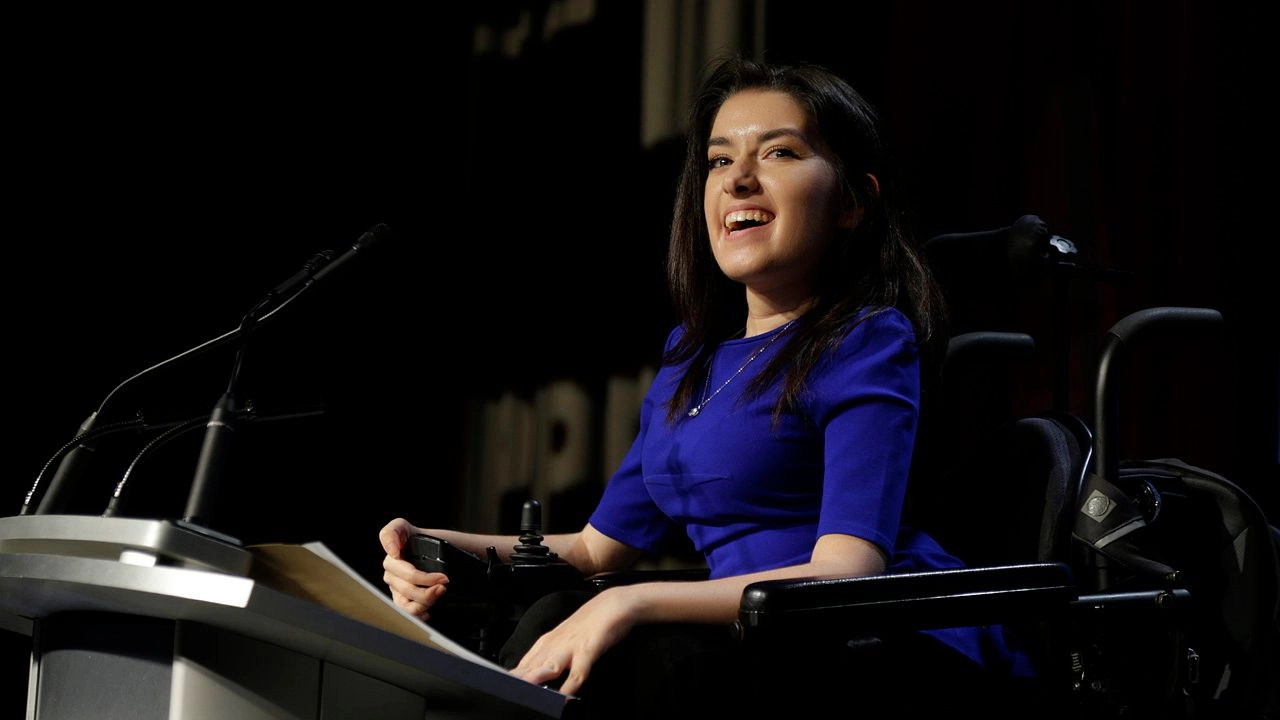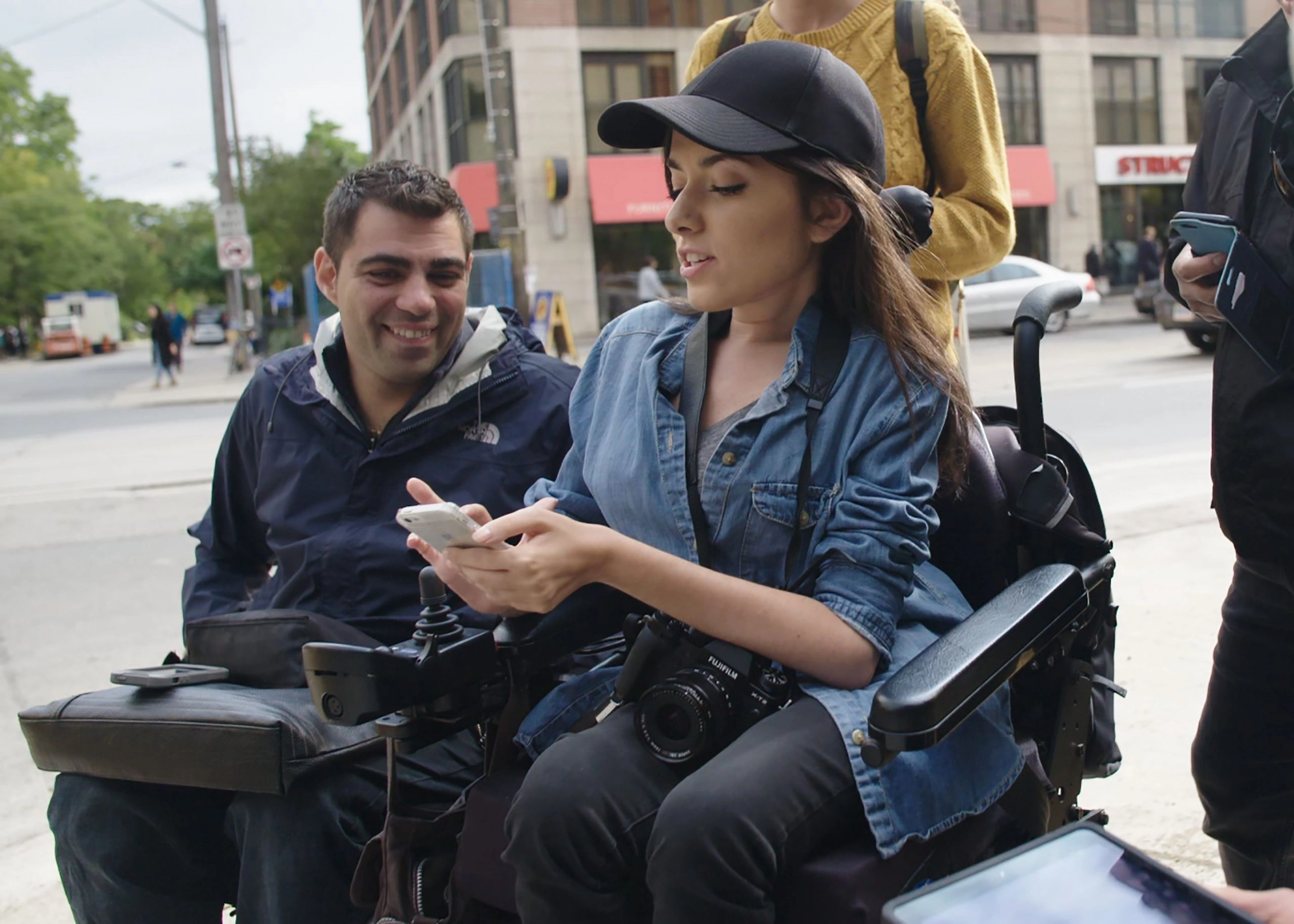The photo shows a thoughtful, resolute gaze. It looks past the camera and silently asks why you think of her differently. It challenges your beliefs and expectations that are perhaps based on erroneous assumptions that usually accompany the sight of someone who sits in a wheelchair. That resolute gaze belongs to a confident entrepreneur, photographer and disability advocate. She is passionate, driven and committed to helping millions of people around the world who live with disabilities confidently navigate their way around the places they choose to go. She is Maayan Ziv and lives with muscular dystrophy, but this has not prevented her from being a positive role model, sought-after speaker and phenomenal woman.
Through her own lens, Maayan tells a story of advocacy, love for photography, and her bold vision for a truly inclusive and accessible world. She shares how photography provided her with subtle opportunities for advocacy that sparked, among other things, the creation of AccessNow, an app that maps accessible venues around the world.

Mélange: Tell us about your photography and the journey to advocacy.
Maayan: One of the things I loved a lot about being a photographer was the fact that I was carving out a space for people with disabilities by existing in an industry that didn’t expect me to be there and didn’t really want me to be there (this is often how it felt). A lot of time was spent convincing people that I could do the job or educating them. I loved being able to reach people and change their ideas about disability; I loved creating space and an awareness that other people could enter the photography industry, see me and think it’s possible. That’s where my advocacy really started: as a part of my identity, as opposed to [me] fighting for ramps to be made or asking people to do things when I traveled.

Mélange: What led to the creation of AccessNow?
Maayan: In the first week of my masters in digital media classes at Ryerson, we were supposed to go to a restaurant to celebrate the beginning of the year, and I realized that I didn’t know if the place we were going to was accessible. This problem had presented itself to me all my life; now maybe there was an opportunity to understand the issue not only on a personal level, but also on a policy level. I started building a business which became an axis just by the sheer need to solve my own problem, and then as I worked on it, I realized how much potential it had to help millions around the world.

Mélange: How does the platform work?
Maayan: We have a mobile app and a website and you can use it anywhere in the world. It’s open, so anyone who joins the platform in our community can contribute their own ratings, like if you went somewhere and thought, “Wow. I never realized how great the accessible washroom is here.” If you are somewhere new and don’t have anything showing up on the app, you could search for a place and add your own review about it. That’s how it grows: within their own communities, people contribute their own knowledge and experiences. [The information is] shared all around the world, which helps the entire community.
Mélange: How has Covid affected AccessNow?
Maayan: A lot of AccessNow is about helping people get out of the house and find accessible things to do, places to go, and cities to visit. That has obviously changed. Everyone is at home. Nobody’s really going anywhere, especially the disability population. We had to change our understanding of accessibility to include things that were accessible from home (like delivery services and virtual experiences). We also had to focus on safe outdoor things like parks and trails experiences that are safe and still provide opportunities to get out and invest in mental health.

Mélange: Do you have any new projects on stream? What are you working on now?
Maayan: Accessibility outdoors and we’ve been looking at Accessible Trails across Canada. A lot of people with disabilities are sharing different trails that are accessible and also, people without disabilities are talking about the importance of going outside, hiking and discovering new experiences. We recently announced our partnership with Trans-Canada Trail to identify accessible trails across the country.
Mélange: Inclusive employment: what are some of the strengths a person with a disability brings to an organization?
Maayan: Most people in the workforce don’t understand our value. They’re afraid or see us as just a liability. Yet, one of our most important [qualities] is resilience: we constantly have to problem-solve in our own lives and bounce back. Our ability to constantly cope with challenges and be flexible are the kinds of skills that most employers look for, so I find it funny that people don’t make that connection. Since I was 6 years old, I’ve had to problem-solve just based purely on the number of skills and exercises I’ve had to work through, so I naturally offer a skill set lacking in somebody who didn’t have those challenges. This is a missed opportunity in the employment space because people don’t realize that it’s such a great asset to have someone who’s naturally more entrepreneurial.
Mélange: What do you think people can do right now to be more accepting and inclusive of people with disabilities?
Maayan: The number one thing people can practice is active listening and openness to being comfortable with things that are different to what they are used to. People get really comfortable with what they know, which often leads to being surrounded by people who look, think, and do like them.
Accountability is also important. Having the understanding that every person is responsible for ensuring that our world is accessible pushes us toward a world that is inclusive. Also, I think there should be more personal drive to ensure that people are educated about disabilities. Although I may choose to do so, it’s not my responsibility to educate others. As it relates to inclusion, people just assume that if you have diversity, you’ll have inclusion. It doesn’t work that way — you have to work for inclusion.

Website: accessnow.com
Instagram: accessnowapp
